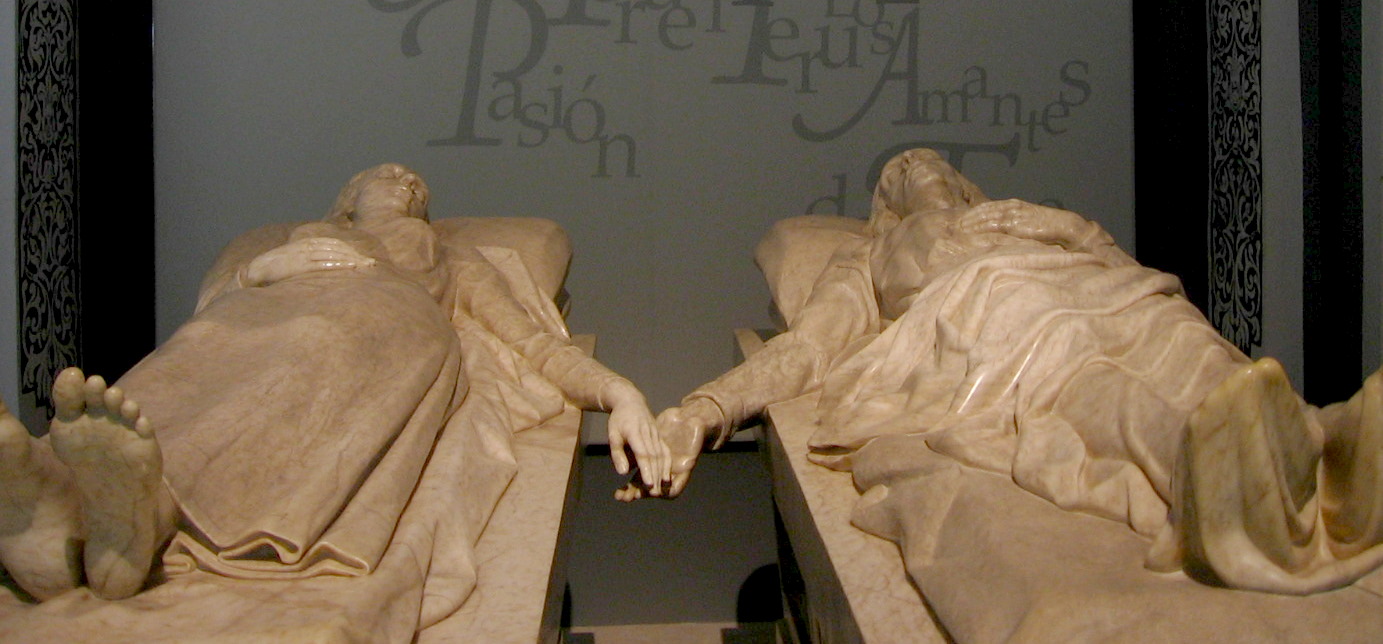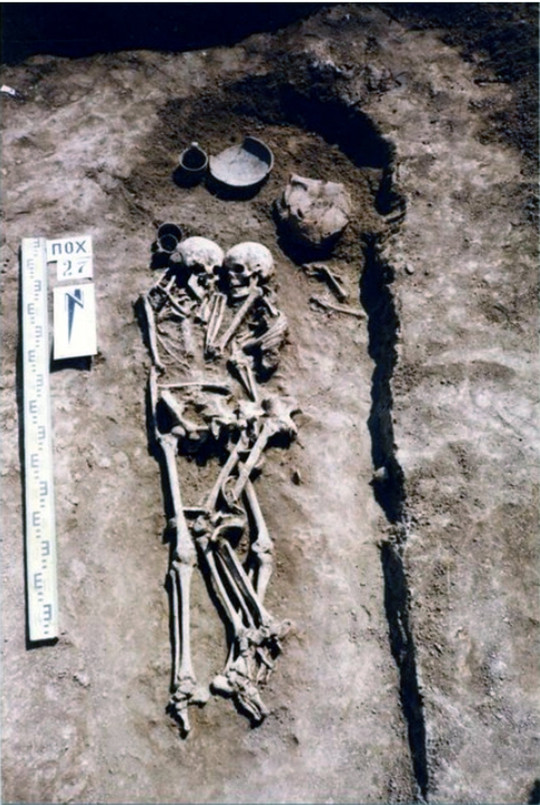Essential Tips for Choosing a Funeral Director
Choosing a funeral director requires thought and consideration to ensure that your loved one’s final...

 Search...
Search...
It is a reasonable assumption that for as long as human beings have walked the earth, love has blossomed. Love stories throughout history are remembered to this day for their effect on our feelings, and even the most ancient of love stories can be relatable to this day. As Valentine's Day approaches, these near-ancient love stories echo themes of passion, devotion and affection that ring true to this day, and go to show that some stories can live on forever after death.

Around the world, and especially in Europe, there are many tales of forbidden love that echo the themes of Romeo and Juliet, but none that have as much evidence behind them and possess a more touching monument than that of the Teruel lovers. In the 1200s in Spain, two wealthy and prominent families, Marcilla and Segura, bore a child each. Juan Martinez, otherwise known as Diego, was a Marcilla while Isabel belonged to the Segura family, the most wealthy in all Teruel. The two were in love from a young age, but when they finally became of age to wed, the Marcilla family fell on hard times, and the head of the Sagura family, Isabel's father, forbade the marriage. Diego negotiated an agreement with Isabel's father that he had five years to build his own fortune, allowing him to marry Isabel if he was able to do so. During those five years, Isabel gave her loving father excuses as to why she couldn't marry before Diego returned, including that she needed the time to learn how to manage a household. Five years to the day that the deal was made, Diego had not returned or been heard from, so Isabel, believing him to be dead, was married to Don Pedro de Azagra. Right after the ceremony, Diego burst through the city gates with his promised fortune and the intention to marry Isabel, having not counted the day that the deal was made within the five year agreement. That night, Diego snuck into the newlyweds bedchamber to beg Isabel to kiss him, but Isabel refused on the grounds that she wouldn't disrespect her new husband, and God must not have destined for them to be together after all. Diego revealed he was dying and this was his last wish, but she refused again. Diego could not bear the rejection and died on the feet of his beloved. Isabel awoke and explained the situation to her husband, who arranged to have him buried secretly in the local church so that he would not be blamed for the death. At the funeral the next day, Isabel arrived in her wedding dress, walked to the front of the church and gently kissed the man she mourned, suddenly dying herself and falling lifeless onto the body of her lover. Over 300 years later, the people of Teruel were so inspired by the love of the two that they petitioned the church to exhume the bodies and have them buried together; a request that the church granted. Their tomb can be found in San Peter's Church in Teruel; a moving monument with the hands of the two lovers reaching out to one another, but not quite touching, as Isabel was married to someone else. While they could not be together in life, their love and devotion has been immortalised in stone and continues to touch the hearts of romantics from all over the world.

The skeletons of two ancient lovers that were discovered in 2013 sparked much intrigue among archeologists and the public. They were discovered in the cemetery of a former Dominican convent in Cluj-Napoca, Romania, and are believed to have died at some point from when the convent was founded to when the cemetery was secularised - between 1450 and 1550. The skeletons were found to belong to a man and a woman, both aged around 30, with their faces towards each other in an intimate stare while holding hands. The apparent injuries on the bodies have led people to speculate on a Romeo and Juliet tragedy. The male skeleton appeared to have died in a fight or accident, as he had blunt force injuries to his sternum and hip, while the woman's cause of death is unclear from her remains. It is unlikely that she took her own life as it was considered a sin and wouldn't have allowed for her to be buried in the convent's graveyard, but as she and her lover were buried at the same time, it is speculated that she could have died of a broken heart. Little else is known about the two lovers, but their love is obvious through their embrace, even in death.

The remarkable grave of a 3,000 year old couple was discovered in 2018 by archeologists in the Ukraine. Inside the grave, scientists unearthed a man and a woman, found locked in a loving embrace, clad with bronze decorations and surrounded with a number of pottery items. The couple is touching to behold, with their foreheads gingerly touching and the woman's legs and right arm gently hugging her lost lover. Archeologists believe that this embrace was quite morbid in origin - saying it would not be possible for the woman's body to be placed in such a position if she were already deceased. It is believed that the woman chose to accompany her lover into the next world by possibly drinking poison before climbing into the grave voluntarily. The pair are believed to have dated back to the prehistoric Vysotskaya - or Wysocko - people, found near Petrykiv village, south of the city of Ternopil in western Ukraine during the Bronze Age, an ancient culture who's burials are renowned for their 'tenderness', according to the Director of the Transcarpathian branch of the Rescue Archaeological Service of the Institute of Archaeology of Ukraine, Dr Bandrivsky. This unique burial outlines the firm belief of Bronze Age couples in the eternal life of the human soul and the idea of soulmates finding each other in this life and the next - a sentiment that survives to this day for so many.

In a more modern tale, the love of Queen Victoria and Prince Albert is well documented throughout history. Queen Victoria was the current reigning Queen of England when she laid her eyes on the young Prince as he arrived on the steps of Windsor Castle in 1839, citing in her journals that she was immediately smitten by the man who'd she'd been arranged to marry. The Queen proposed to Albert in October of 1839, and they were married nearly 4 months later. While the alliance had a political agenda, the two are believed to have deeply loved each other.

Prince Albert passed away suddenly in 1861, in the presence of his wife and children, at the age of 42. After his death, Queen Victoria famously entered a deep and all-consuming phase of mourning. She wore all black, shut herself away and allegedly slept with a cast of the Prince's hand until her own death in 1901, 40 years later. During her mourning, she had her tomb built alongside her husbands in Frogmore, to be stored away until she was buried alongside him after her own death. The Royal Mausoleum contains an intricately carved sarcophagus that is thought to be the largest block of granite in existence. The effigy depicts the couple laying side-by-side in a bed, as if asleep, signifying that they were finally at rest, together at last. Queen Victoria was also buried with both wedding rings and her white lace wedding veil, thought to be a symbol that in death, her grief had finally ended. Oftentimes, royalty can be viewed as cold and unfeeling, but the love of Queen Victoria and Prince Albert stands as a touching display of affection and devotion, even after one had passed.
One of the most famous sets of human remains in all history is that of the Hasanlu lovers. Two skeletons were discovered in a bin-like structure in an ancient grave in the Solduz Valley, West Azerbaijan, Iran by a team from the University of Pennsylvania. The discovery was unearthed in 1972, along with approximately 246 other skeletons that were found at the same site. The two skeletons stood out to both the researchers and the world, as they were found in a tender embrace, with one skeleton gently kissing the lips of the other with no other objects found in the grave except for a stone slab under the skull of the skeleton on the left. Both skeletons did not appear to have any injuries at the time of death. While the skeletons were initially identified as a man aged 19-22 years old and a woman aged 30-35 years old, it was later discovered that both skeletons were men. While this fact was sensationalised at the time of the discovery, researchers point out the use of modern standards of heteronormativity as problematic when analysing ancient artifacts as their cultural context has been lost to history. No matter the background of the Hasanlu pair, whether or not they were really lovers, their image sparks romance for anyone who views them in their embrace. You can view photos of the Hasanlu lovers and learn more on the Penn Museum website.

By Claudia Slack
Sources: